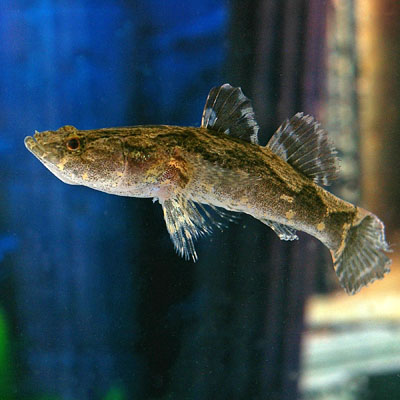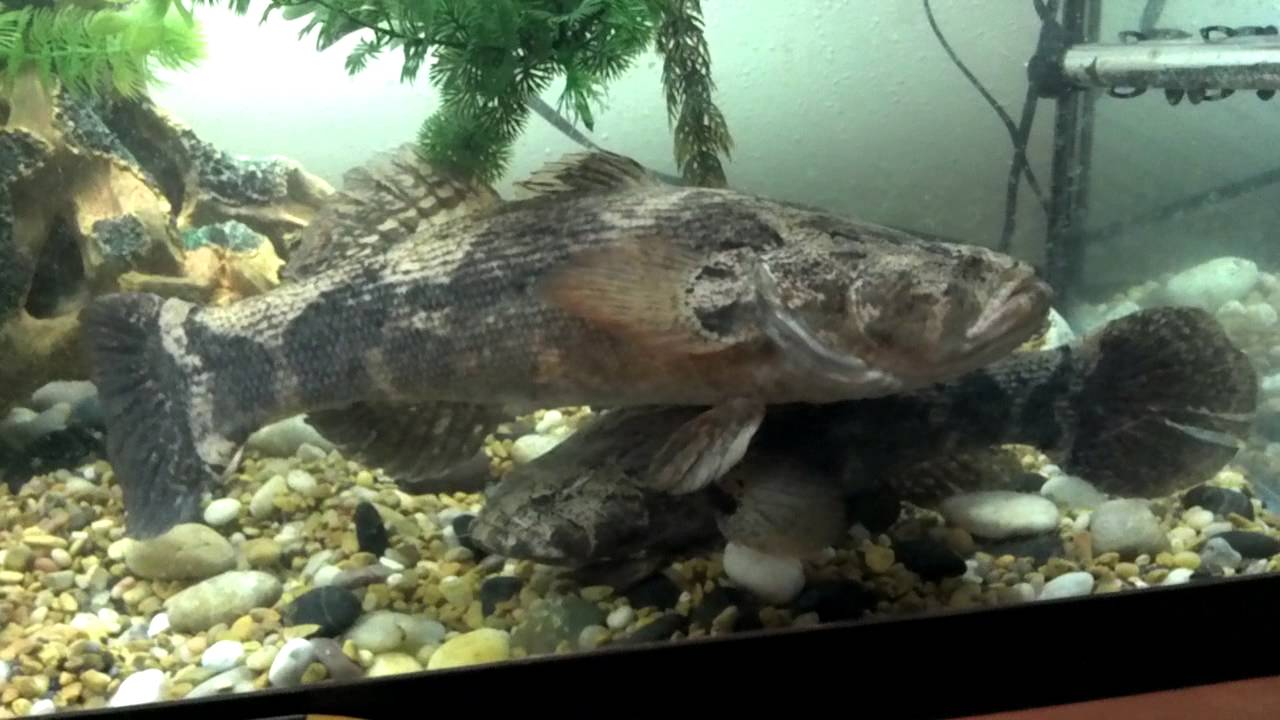
Oxyeleotris marmorata
FAMILY
Eleotridae
TAXONOMY
Eleotris marmorata Bleeker, 1852, Bandjarmasin, Borneo, and
Palembang, southeast Sumatra, Indonesia.
OTHER COMMON NAMES
English: Marble goby, marbled sand goby; German: Marmorgrundel;
Cantonese: Soon hock; Japanese: Kawaanago; Khmer:
Trey damrei; Laotian: Pa bou; Malay: Bakutut, belantuk; Tagalog:
Bia; Thai: Pla bu jak; Vietnamese: Cб bong.
PHYSICAL CHARACTERISTICS
The largest gobioid fish, this species may reach 35.4 in (90 cm)
total length. Torpedo-like body shape with flattened head.
Oblique, terminal mouth. Two dorsal fins and rounded caudal
fin. Pelvic fins separate. Body brown with dark mottling giving
a marbled appearance.
DISTRIBUTION
Southeast Asia in Laos, Cambodia, Vietnam, Thailand, Malay
Peninsula, Sumatra and western Borneo. Also reported from
Luzon (Philippines), and introduced into Taiwan for aquaculture.
HABITAT
Found in rivers, lakes, swamps, ditches, and ponds; water may
be muddy or clear and over muddy, sandy, or gravel bottoms.
This species may also be found in brackish waters around the
mouths of rivers and canals.
BEHAVIOR
Solitary, nocturnal hunter that prowls slow-moving streams,
lakes, and swamps. During the daytime it rests at the bottom,
taking cover among rocks, woody debris, or vegetation. This
may be the typical
BEHAVIOR
for most sleepers, hence the common
name.
FEEDING ECOLOGY AND DIET
Predaceous; primarily eats small fishes, but also takes crustaceans,
insects, and mollusks. Larval fish in culture ponds feed
on cladocerans, rotifers, chironomids, and brachiopods.
REPRODUCTIVE BIOLOGY
Reach sexual maturity at approximately 3.9–4.7 in (10–12 cm)
standard length. Spawns January through October. The eggs
are about 0.09 in (2.3 mm) long and 0.02 in (0.63 mm) wide.
Hatching starts at about 41 hours after fertilization, reaching its
peak about 60–70 hours after fertilization. The males care for
the eggs and guard the newly hatched fry. The larvae are initially
pelagic but change to a more benthic habitats after about
25–30 days, becoming quite sedentary after about 40 days.
CONSERVATION STATUS
Not listed by the IUCN, but the species may be declining in
some parts of its native range due to overharvesting.
SIGNIFICANCE TO HUMANS
A highly prized food fish in Southeast Asia, where it is also
raised in ponds. In 2000, 277 tons (282 t) of marble sleeper
were produced by aquaculture in Malaysia, Singapore, and
Thailand. This quantity represents about 74% of the total
global aquaculture of gobioid fishes for 2000, and had a value
of about $1.2 million. In Borneo, marble sleepers captured for
markets in Singapore and Japan may bring a fisherman $20 per
lb ($10 per kg).
Other popular Animals
Photo Gallery of - Marble sleeper





 Animalia Life
Animalia Life